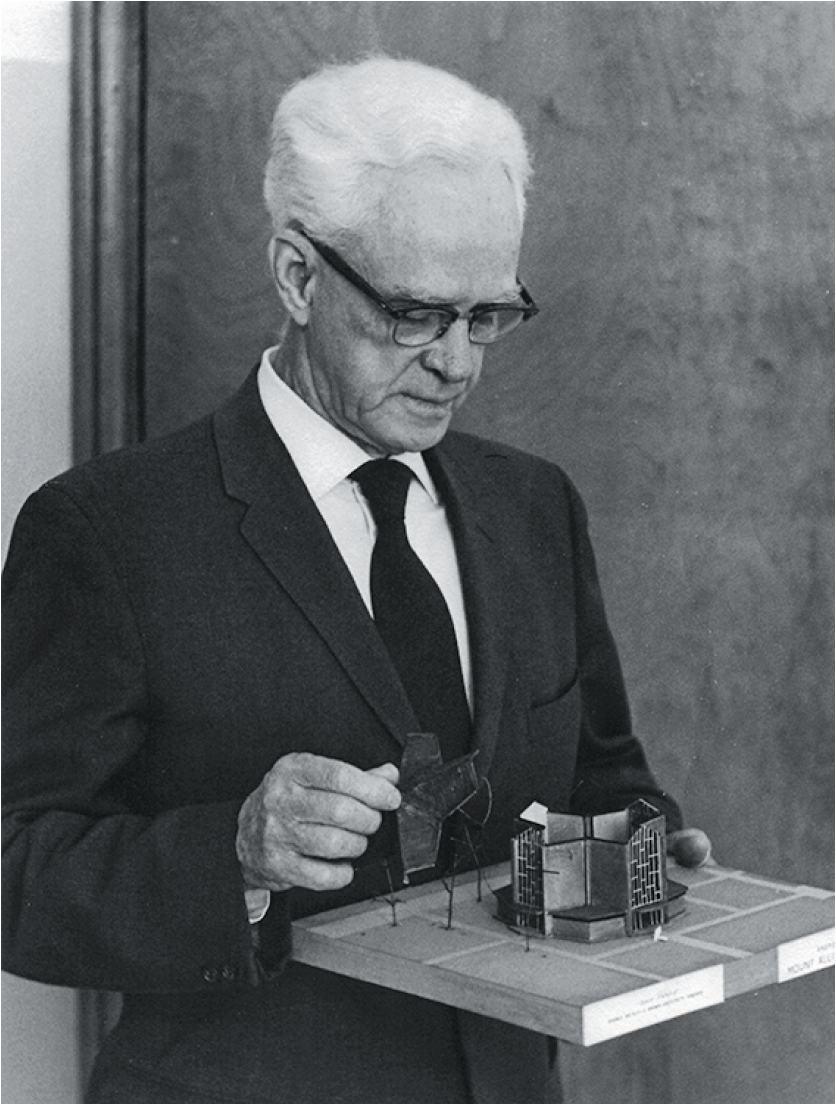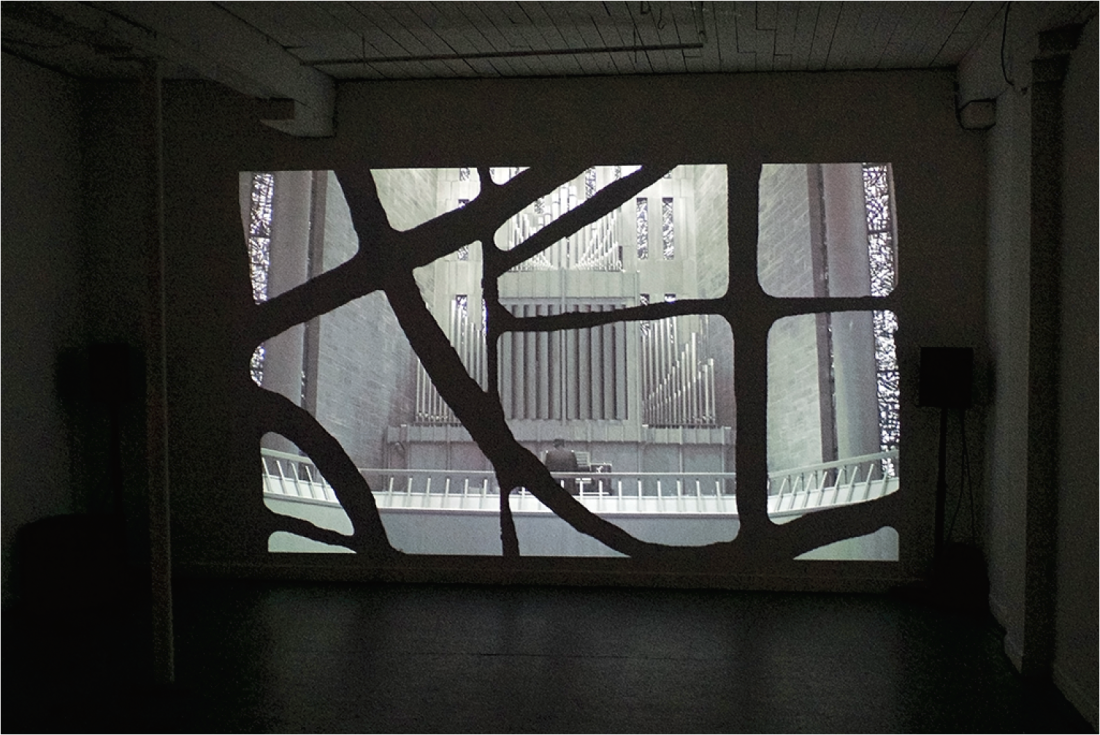William Robinson
Analysis may lead to understanding, though the variables considered in any analytical exercise have the ability to confound our expectations for meaning. That apparent paradox is at the heart of the all-toohuman urge to make sense out of whatever data we are presented with, often, indeed, to create meanings out of mere noise—to hear that someone is dead when a record plays backwards, or to find coded messages in radio static; even to find evidence of conscious design in natural processes, or to read the “book of nature” and hear a god’s voice.
William Robinson understands the impulse to analyze facts and to create from them new truths. His analytical approach to the world permits new readings of old things— music is created from geology or architecture, measurements are transformed into sound and sites come alive.

William Robinson, The Counsel, 2017, inkjet print (scanned archival photo), 58.86 x 44.72 cm. Original archival photo courtesy Mount Allison University Archives. Photographer unknown.
Over the past several years Robinson has turned the architectural plans of brutalist buildings into musical scores that have then been played in the buildings themselves, translated the letter of internment that saw Leon Trotsky incarcerated in Halifax into a percussion performance, and traced how melteddown church bells became shell casings and then saxophones.
In his latest project he takes as his starting point two sites in Sackville, New Brunswick: the Mount Allison University Chapel and the inactive Pickard Quarry from which came the red sandstone that makes up most of the university’s architecture. Robinson began with three diagrams—topographical and elevation surveying maps of Pickard Quarry and topographical plans of the chapel. Traced onto musical staff paper, anywhere that the map lines crossed a staff was considered a “note.” The resulting scores were translated into musical compositions by his collaborator for the project, organist Nicholas Veltmeyer.

Installation view, “Pickard Quarry Transpose,” Struts Gallery, 2017. Photo: William Robinson.
The exhibition itself had three components, all of them referring back and forth to each other. The first, a sculptural installation that Robinson titled Trio, consisted of three separate units made of a faux stone purchased at a garden supply store, a lit candle, a turntable acting as base, and a microphone stand, mic and various electronic devices. The mics held sensors that scanned the topography of the stones. The electronics translated the information derived as the stones rotated past the sensors into sound—an ululating tone in different registers that gave each piece its individual title: tenor, countertenor, baritone. Six ink-jet prints made up the second stage of the exhibition, with each work referring to some aspect of the history, geology or geography of the chapel and the quarry. The final component was a video projection of Nicholas Veltmeyer playing the three pieces derived from the transposition of the survey data into music. The night of the opening Veltmeyer also played the three pieces live at the chapel.
“Pickard Quarry Transpose” is the result of Robinson’s artist residency at Struts, and effectively conveys the research the artist undertook while working in Sackville. Immersive, thoughtful and transporting, Robinson’s hybrid installation creates a new experience from what began as familiar elements of the local topography. In this work Robinson makes thought both visible and audible, his reading of Sackville revealing a text that underlies its stones and concrete, making its history, or at least a version thereof, available to our senses. ❚
“Pickard Quarry Transpose” was exhibited at Struts Gallery, Sackville, NB, from January 20 to February 17, 2017.
Ray Cronin is a writer and curator living in Halifax, Nova Scotia, and the founding curator of the Sobey Art Award. He is a frequent contributor to exhibition catalogues, magazines and books about Canadian art.

